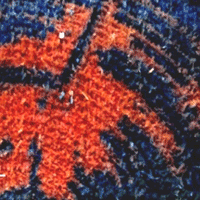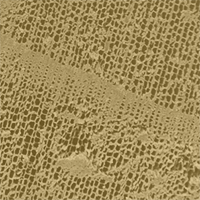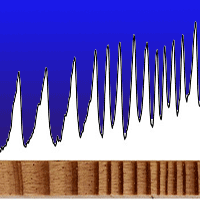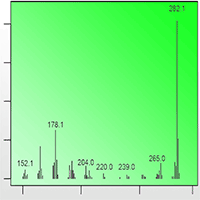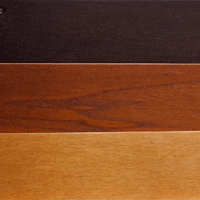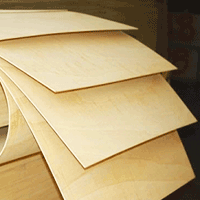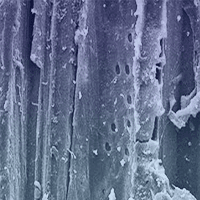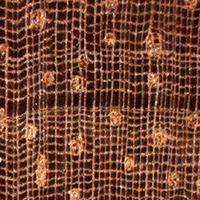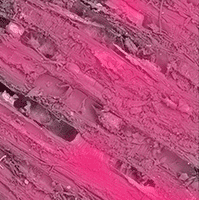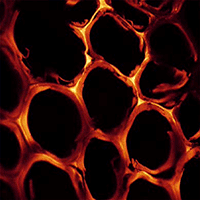
Wood modification technologies - a review
Dick Sandberg (1) , Andreja Kutnar (2-3), George Mantanis (4)
iForest - Biogeosciences and Forestry, Volume 10, Issue 6, Pages 895-908 (2017)
doi: https://doi.org/10.3832/ifor2380-010
Published: Dec 01, 2017 - Copyright © 2017 SISEF
Review Papers
Collection/Special Issue: COST action FP1407
Understanding wood modification through an integrated scientific and environmental impact approach
Guest Editors: Giacomo Goli, Andreja Kutnar, Dennis Jones, Dick Sandberg
Abstract
The market for new durable products of modified wood has increased substantially during the last few years, especially in Europe. This increased interest depends partly on the restricted use of toxic preservatives due to increased environmental concern, as well as the need for reduced maintenance for wood products that are mainly for exterior use. Furthermore, as sustainability becomes a greater concern, the environmental impact of construction and interior materials should be included in planning by considering the entire life cycle and embodied energy of the materials used. As a result, wood modification has been implemented to improve the intrinsic properties of wood, widen the range of sawn timber applications, and acquire the form and functionality desired by engineers, without bringing environmental friendliness into question. The different wood modification processes are at various stages of development, and the challenges that must be overcome to expand to industrial applications differ amongst them. In this paper, three groups of wood modification processes are discussed and exemplified with modified wood products that have been newly introduced to the market: (i) chemical processing (acetylation, furfurylation, resin impregnation etc.); (ii) thermo-hydro processing (thermal treatment); and (iii) thermo-hydro-mechanical processing (surface densification). Building on these examples, the paper will discuss the environmental impact assessment of modification processes and further development needs.
Keywords
Chemical Treatments, Thermo-hydro-mechanical, LCA, Acetylation, Furfurylation, Resin Impregnation, Environmental Impacts, Densification
Authors’ Info
Authors’ address
Luleå University of Technology, Wood Science and Engineering, SE-931 87 Skellefteå (Sweden)
University of Primorska, Andrej Marušič Institute, Muzejski trg 2, SI-6000 Koper (Slovenia)
InnoRenew CoE, Livade 6, SI-6310 Izola (Slovenia)
TEI of Thessaly, Research Lab of Wood Science and Technology, Griva 11, GR-43100 Karditsa (Greece)
Corresponding author
Paper Info
Citation
Sandberg D, Kutnar A, Mantanis G (2017). Wood modification technologies - a review. iForest 10: 895-908. - doi: 10.3832/ifor2380-010
Academic Editor
Giacomo Goli
Paper history
Received: Jan 30, 2017
Accepted: Aug 13, 2017
First online: Dec 01, 2017
Publication Date: Dec 31, 2017
Publication Time: 3.67 months
Copyright Information
© SISEF - The Italian Society of Silviculture and Forest Ecology 2017
Open Access
This article is distributed under the terms of the Creative Commons Attribution-Non Commercial 4.0 International (https://creativecommons.org/licenses/by-nc/4.0/), which permits unrestricted use, distribution, and reproduction in any medium, provided you give appropriate credit to the original author(s) and the source, provide a link to the Creative Commons license, and indicate if changes were made.
Web Metrics
Breakdown by View Type
Article Usage
Total Article Views: 97742
(from publication date up to now)
Breakdown by View Type
HTML Page Views: 65270
Abstract Page Views: 9734
PDF Downloads: 21199
Citation/Reference Downloads: 216
XML Downloads: 1323
Web Metrics
Days since publication: 2918
Overall contacts: 97742
Avg. contacts per week: 234.47
Citation Metrics
Article Citations
Article citations are based on data periodically collected from the Clarivate Web of Science web site
(last update: Mar 2025)
Total number of cites (since 2017): 323
Average cites per year: 35.89
Publication Metrics
by Dimensions ©
Articles citing this article
List of the papers citing this article based on CrossRef Cited-by.
References
Der Waldelefant von Lehringen, eine Jagdheute des diluvialen Menschen. [The forest elephant of Lehringen, a hunt for the diluvial man. ] Quartär 5: 79-84. [in German]
Gscholar
The resistance of Accoya® and Tricoya® to attack by wood-destroying fungi and termites. In: Proceedings of the “45th Annual Meeting of the International Research Group (IRG) on Wood Protection”. St. George (Utah, USA) 11-15 May 2014. Document IRG/WP 14/40658, IRG, Stockholm, Sweden, pp. 10.
Gscholar
Resistance of acetylated wood to basiomycetes, soft rot and blue stain. In: Proceedings of the “25th Annual Meeting of the International Research Group (IRG) on Wood Protection”. Bali (Indonesia) 29 May - 3 June 1994. Document IRG/WP 94/40021, IRG, Stockholm, Sweden, pp. 12.
Gscholar
Impregnating solutions and method of impregnation therewith. US Patent 2.909.450, United States Patent and Trademark Office, Alexandria, VA, USA, pp. 4.
Gscholar
Research on biodeterioration of wood: I. Decay mechanisms and biocontrol. Research Report FPL-RP-529, Forest Products Laboratory, Madison, WI, USA, pp. 22.
Gscholar
Wood modification - chemical, thermal and other processes. Wiley Series in Renewable Resources, Wiley and Sons, Chichester, UK, pp. 260.
Gscholar
The environmental impacts associated with wood modification balanced by the benefits of life extension. In: Proceedings of the “ECWM7 - European Wood Conference on Wood Modification” (Nunes L, Jones D, Hill C, Militz H eds). Lisboa (Portugal), 10-12 March 2014. LNEC - Laboratório Nacional de Engenhara Civil, Lisboa, Portugal, pp. 83.
Online | Gscholar
The role of wood characteristics in high temperature drying. Journal of the Institute of Wood Science 7 (2): 60-67.
Gscholar
The toughness of hygrothermally modified wood. Holzforschung 69 (7): 851-862.
Gscholar
Dimensional stability, mechanical properties and color changes of a low molecular weight melamine formaldehyde resin impregnated wood. Mokuzai Gakkaishi 39: 181-189.
Gscholar
ISO 14040 Environmental management - Life cycle assessment - Principles and framework. International Organization for Standardization, Geneva, Switzerland, pp. 20.
Gscholar
ISO 14044 Environmental management - Life cycle assessment - Requirements and guidelines. International Organization for Standardization, Geneva, Switzerland, pp. 46.
Gscholar
Wood modification - a brief overview of the technology. In: Proceedings of the “5th COST E34 International Workshop” (Sernek M ed). Bled (Slovenia) 6-7 Sept 2007. University of Ljubljana, Slovenia, pp. 1-9.
Gscholar
Combined N-methylol melamine colouring agent modification of hardwoods to improve their performance under use-class 3. In: Proceeding of “ECWM6 - 6th European Conference on Wood Modification” (Jones D, Petrič M, Paclič M eds). Ljubljana (Slovenia) 17-18 Sept 2012. University of Ljubljana, Slovenia, pp. 437-446.
Online | Gscholar
Effect of high temperatures on the mode of fracture of a softwood. Southern Lumberman 121 (1576): 219-221.
Gscholar
Technologie des Holzes [Wood technology]. Verlag von Julius Springer, Berlin, pp. 788. [in German]
Gscholar
Interlace treatment - wood modification with N-methylol compounds. In: Proceedings of the “ECWM1 - First European Conference on Wood Modification” (van Acker J, Hill C eds). Ghent University, Belgium, 3-4 April 2003, pp. 317-328.
Gscholar
Process for improving the durability, dimensional stability and surface hardness of a wood body. US Patent 7.595.116 B2, United States Patent and Trademark Office, Alexandria, VA, USA, pp. 5.
Gscholar
End of life scenarios and the carbon footprint of wood cladding. In: “The Carbon Footprint Handbook” (Muthu SS ed). CRC Press, Boca Raton, FL, USA, pp. 85-100.
Gscholar
Furfurylation of wood - Wood modification by the use of furfuryl alcohol. PhD thesis, Norwegian University of Life Science, Ås, Norway, pp. 194.
Gscholar
Holzschutz mit Melaminharzen [Wood protection with melamine resins]. PhD thesis, University of Hamburg, Germany, pp. 193. [in German]
Gscholar
Effects of moistening treatment on the hygroscopicity and the vibrational properties of aged wood. In: Proceedings of the “International Association of Wood Products Societies (IAWPS) - International Symposium on Wood Science and Technology”. Tower Hall Funabori, Tokyo (Japan) 15-17 March 2015, pp. 247.
Gscholar
The evolution of thermally modified timber and beyond. Presentation given at Forest Industry Engineering Association (FIEA) event “Wood Innovations 2014“ Melbourne (Australia), 23-24 Sept 2014.
Gscholar
Accelerated aging: residual weight and flexural properties of wood heated in air at 115 °C to 175 °C. Wood Science 4 (4): 193-201.
Gscholar
Thermo hydro mechanical processing of wood. EPFL Press, Lausanne, Switzerland, pp. 376.
Gscholar
Development of a continuous wood surface densification process: the roller pressing technique. In: Proceedings of the “59th International Convention of Society of Wood Science and Technology. Forest Resource and Products: Moving Toward a Sustainable Future” (LeVan-Green S ed). Curitiba (Brasil) 6-10 March 2016, pp. 17-24.
Gscholar
Dimensional stabilization of wood with dimethylol compounds. In: Proceedings of the “International Research Group on Wood Protection”. Honey Harbour, Ontario (Canada) 17-22 May 1987. Document IRG/WP 3412, IRG, Stockholm, Sweden, pp. 10.
Gscholar
Chemical modification of solid wood and wood raw material for composites production with linear chain carboxylic acid anhydrides: a brief review. BioResources 5 (1): 499-506.
Gscholar
Toxic hazard and chemical analysis of leacheates from furfurylated wood. Environmental Toxicology Chemistry 29: 1918-1924.
Gscholar
Effect of high temperatures on the mode of fracture and other properties of a hardwood. Southern Lumberman 137 (1766): 58-60.
Gscholar
Melaminharzimprägniertes so wiemitWetterschutzlasuro-berflächenbehandeltes und unbehandeltes Vollholz während zweijähriger Freilandbewitterung [Melamine resin treated as well as varnish coated and untreated solid wood during drying two years of natural weathering]. Holz als Roh- und Werkstoff 57: 331-339. [in German]
CrossRef | Gscholar
Chemical modification of wood: a review. Commonwealth Forestry Bureau, Oxford, UK, vol. 6, pp. 363-382.
Gscholar
Acetyl distribution in acetylated whole wood and reactivity of isolated wood cell wall components to acetic anhydride. Wood and Fiber Science 26 (1): 11-18.
Gscholar
New cell wall and cell lumen wood polymer composites. Wood Science and Technology 29: 121-127.
Gscholar
Preparing wood matrices. US Patent No. 646547, United States Patent and Trademark Office, Alexandria, VA, USA, pp. 3.
Gscholar
Heat-stabilized compressed wood - Staypack. Mechanical Engineering 67: 25-31.
Gscholar
Forest products laboratory resin-treated wood (impreg). Research Report no. 1380, Forest Products Laboratory, Madison, WI, USA, pp. 10.
Gscholar
A new approach to the acetylation of wood. Forest Products Laboratory, USDA Forest Service, Madison, WI, USA, pp. 9.
Gscholar
Surface densification of wood. Forest Products Journal 18 (9): 104-107.
Gscholar
Värmebehandling av trä för minskning av svällning och krympning [Heat treatment of wood for decreased swelling and shrinkage]. Report No. 18, The Swedish Wood Technology Research Institute, Stockholm, Sweden, pp. 23. [in Swedish]
Gscholar
The effect of different methods of drying on the strength of wood. Lumber World Review 28 (7): 19-20.
Gscholar
Wood building products in comparative LCA. A literature review. International Journal of LCA 12 (7): 470-479.
Gscholar
Field performance of furfuryl alcohol treated wood. In: Proceedings of the “4th Pacific Rim Bio-Based Composites Symposium” Bogor (Indonesia) 2-5 Nov 1998. Bogor Agricultural University, Bogor, West Indonesia, pp. 305-331.
Gscholar
Marine borer resistance of acetylated and furfurylated wood - Results from up to 16 years of field exposure. In: Proceedings of the “47th Annual Meeting of the International Research Group (IRG) on Wood Protection”. Lisbon (Portugal) 15-19 May 2016. Document IRG/WP 16-40756, IRG, Stockholm, Sweden, pp. 10.
Gscholar

